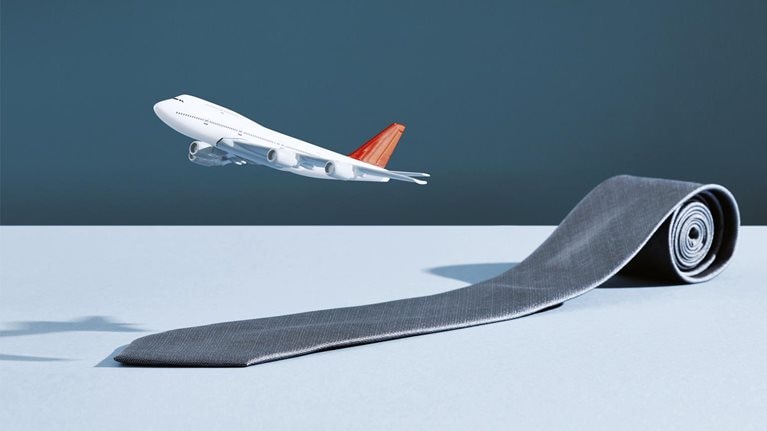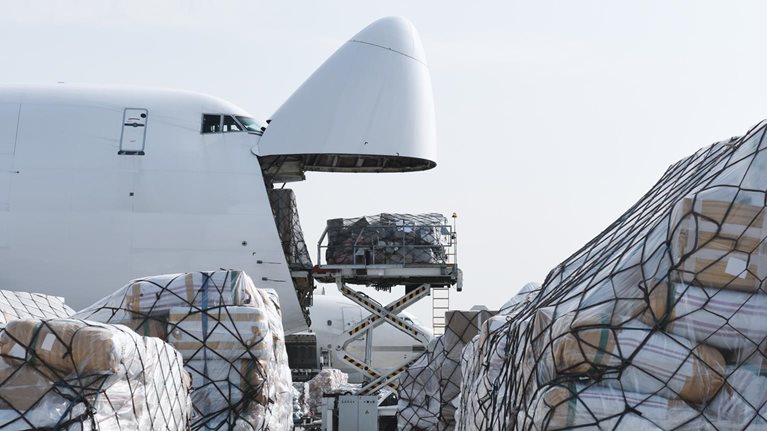Just as airlines began their recovery from the COVID-19 pandemic, the sector was hit by another challenge—a rapid spike in fuel prices. Since the start of 2022, the price of jet fuel increased by approximately 90 percent and costs roughly 120 percent more, on average, than it did in 2021, at the time of writing.1 This price increase presents a significant challenge for airlines as fuel is often the largest operating cost, accounting for around 25 percent of total costs depending on the year.
Counterintuitively, high fuel prices might not necessarily be a bad thing for the industry. Even though it causes short-term pain, it also increases marginal costs of flying—which can foster greater capacity discipline. This, in turn, drives healthier industry economics and can help profitability.
This article examines what airlines have done in the past when fuel prices were high and offers strategies that airlines could consider to mitigate the effects of fuel price hikes. We believe this is especially important at a time when a potential recession looms and pressure is increasing for airlines to drive improved sustainability.
Sky-rocketing jet fuel
The price of crude oil and jet fuel steadily increased over the course of 2021 and reached new highs in early 2022. As of June 27, 2022, a barrel of West Texas Intermediate (WTI) crude oil is hovering around $111, up by about 135 percent since the beginning of 2021. Refined product prices have risen even more, with jet fuel now around $4 a gallon in the United States, up approximately 90 percent since the beginning of 2022, and increasing by around 215 percent since January 2021 (Exhibit 1).

Additionally, a “perfect storm” is driving increased price volatility in some local markets, such as New York. Refining capacity has come down significantly post-COVID-19 as refineries, seeing less demand, have shifted capacity away from producing jet fuel towards other fuels. Furthermore, Russia’s invasion of Ukraine contributed to lower crude oil and refined product exports, especially to Europe. These factors have pushed up prices globally for crude oil as well as for middle distillates such as diesel and jet fuel. On top of these global price increases, local logistics constraints in meeting the sudden increase in aviation demand, in places such as the Northeast United States, have caused additional local price spikes specific to jet fuel where the price per gallon has topped $8.
These steeply rising energy costs represent the next hurdle for an industry still recovering from the COVID-19 pandemic. One major US airline recently stated in its annual report that for every cent a gallon of jet fuel increases in price, the airline’s total fuel bill would increase by $40 million.2 Therefore, the recent 195-cent increase in jet fuel equates to an approximate $8 billion increase in annual fuel costs for this airline.
Would you like to learn more about our Travel, Logistics & Infrastructure Practice?
The right medicine?
Contrary to headlines, high jet fuel prices may not be as bad for airlines as expected, for three reasons. First, the main pain points are predominantly in the short term. Carriers differ in the degree to which they hedge fuel, but many will have already sold a portion of their tickets at the assumption of lower fuel prices and must fly passengers at higher fuel prices. However, the booking window has significantly shortened during COVID-19, so the portion of tickets sold at the lower-price assumption is relatively small and represents a short-term pain point.
Second, airlines can pass on some of the price increase to consumers, as they have done in the past. Analysis of past periods with high fuel price rises suggests a positive correlation with unit revenue (Exhibit 2).

Third, higher fuel prices mean higher marginal costs of flying, which can lead to greater capacity discipline. The airline sector has been challenged in terms of shareholder value creation for a long time, and overcapacity has contributed to this. For an asset-intensive sector, entry barriers are surprisingly low—both for starting an airline and for an airline to start a new route or flight. In addition, the marginal cost of operating a flight is low. Typically, between 30 and 35 percent of an airline’s operating cost is fully flight-variable (jet fuel cost, but also airport landing and passenger charges, as well as air traffic control charges and in-flight catering).3 This incentivizes airlines to add capacity as most of the costs have already been incurred, such as aircraft rental, flight crew salaries, and overheads—so an additional flight does not lead to significantly higher cost while allowing the airline to chase market share as a “golden ticket” to profitability. At a system level, however, that leads to overcapacity, eroding value.
With higher fuel prices, the marginal cost of operating increases, which in the past has led to more disciplined capacity deployment. Better discipline restores profitability. To illustrate, the period between 2010 and 2012 saw relatively high fuel prices—on average, the cost of jet fuel was around 70 percent higher than it had been between 2003 and 2005. But capacity discipline (measured by the ratio of available seat-mile growth to GDP growth) improved and the average operating margin in that period was significantly higher than it had been during 2003 to 2005 (Exhibit 3).4 While there are certainly other factors at play, including consolidation, the significantly improved margin despite higher fuel prices stands out. Higher marginal costs forced airlines to re-assess route profitability, in some instances choosing not to fly certain routes as keeping them operational would be more expensive than keeping the aircraft grounded. This led to more rationalized capacity behavior across the industry. For an industry where overcapacity is one of the key challenges to sustained profitability, this was a beneficial reaction.

A potential path forward
Although high fuel prices are painful for airlines in the short term, it is possible for airlines to remain profitable in times of high and low fuel prices, and they have done so in the past. Getting capacity deployment right is vitally important, particularly considering the increased push to be environmentally friendly and reduce emissions. Operating ghost flights is becoming untenable and flying marginally profitable markets less appealing. Higher interest rates and inflation will also create pressure as the cost of borrowing to support an unprofitable operation may compound into future earnings challenges.
Going forward, airlines could consider ways to be more disciplined in capacity deployment, and strategically focus growth on areas of current strength, and in markets where the carrier has a unique advantage, as opposed to matching the growth plans of competitors. It might also be worth considering the refresh of fuel hedging strategies that can, in some cases, soften the impact of sudden fuel price spikes.
Note: As oil prices are a commodity they will continue to fluctuate, the viewpoints in this article are reflective of the overall scenario.


